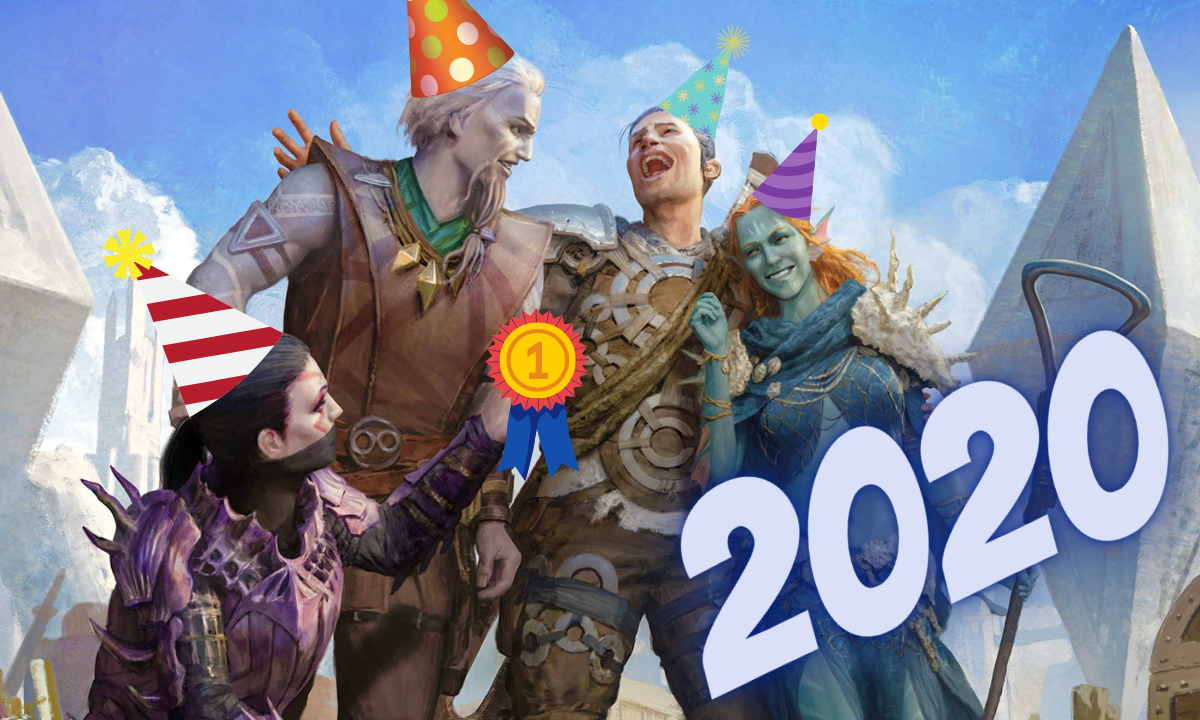Hello everyone and well done on surviving 2020. With the year finally coming to a close, I thought I’d look back at my personal highlights and favourite cards of the last 12 months. I’ll get to the main list momentarily, but first…
Dishonourable Mentions
Skyclave Apparition
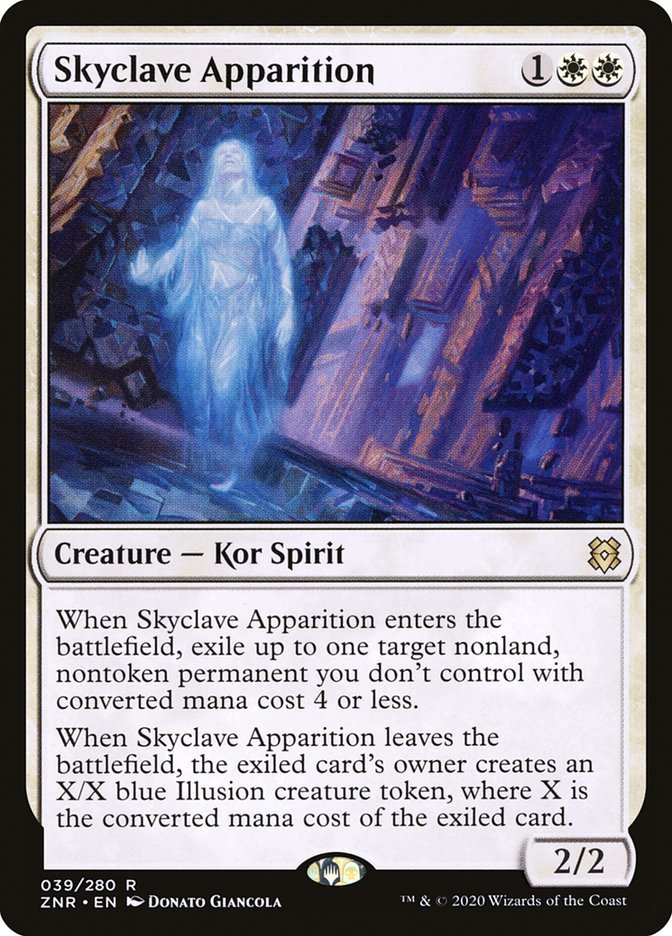
I know Skyclave Apparition is a good card and I accept that it’s probably better for the game that it exists. However, as a player whose favourite deck is synergy-based and plays to the board, my strategy is easily dismantled by the Apparition’s ability. The fact that when the Apparition dies (often from having to trade with one of my Elves) I only get back a rubbish 3/3 rather than my Elvish Archdruid really hurts me on a personal level.
Omnath, Locus of Creation
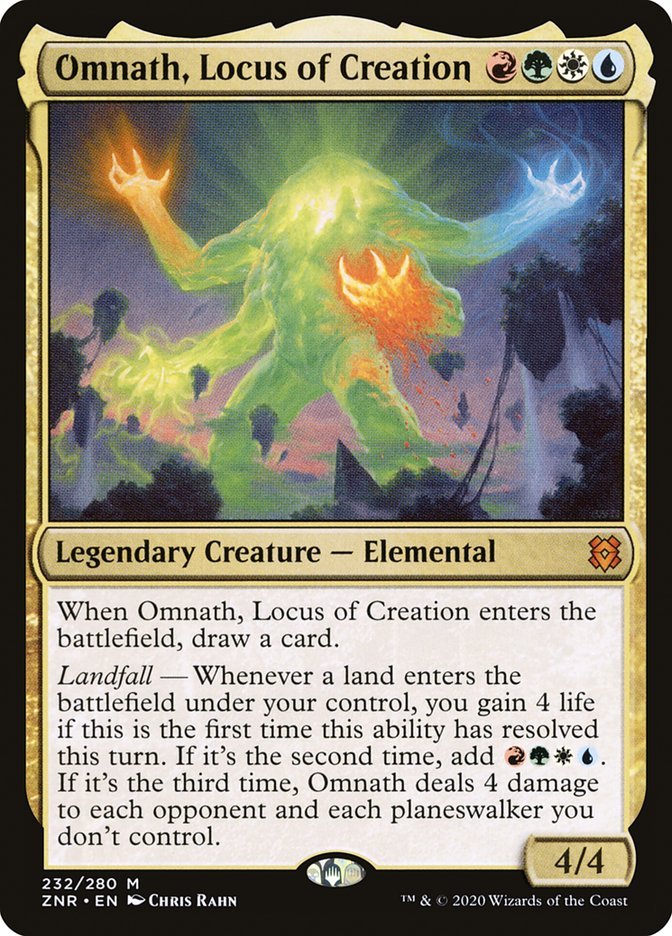
Omnath mirrors were a guilty pleasure of mine. While I understand that the card was probably a bad idea for Standard and put a lot of players off, I will miss being able to have two of these decks jam huge turns against each other. Omnath, you will be remembered, for better or for worse.
Uro, Titan of Nature’s Wrath
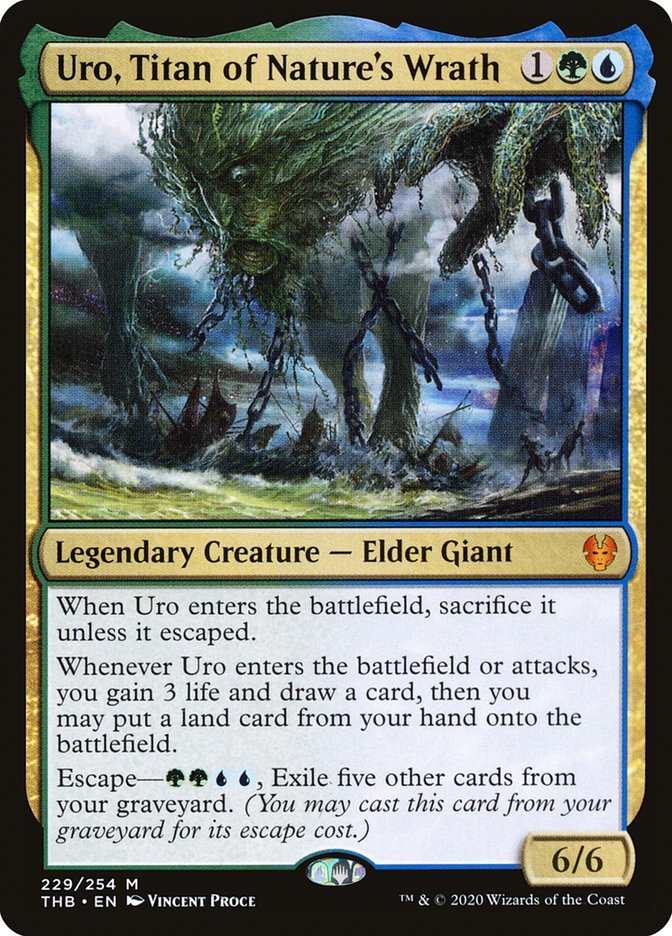
Blue-Green is my favourite colour combination. If you’d told me a year ago that they would print a recurrable threat in my favourite colours that drew cards, ramped and gained life and was legendary to boot, I’d have been pretty stoked. What we got though, was a card tuned up so much that it became a ubiquitous include across multiple formats and made everyone even more sick of Simic, especially after the Oko debacle. I should be happy that my favourite colours get the best toys. Instead, I’m just tired of them breaking formats and making everyone sad.
[adinserter block=”1″]
Now, a note on the actual top 10. This is an extremely subjective list – I’ve picked cards that exemplify high points of the year for me in terms of Magic. This includes cards that represent favourite draft archetypes, novel mechanics, great art and new cards for old decks. Anyway, without further ado:
#10: Chromatic Orrery
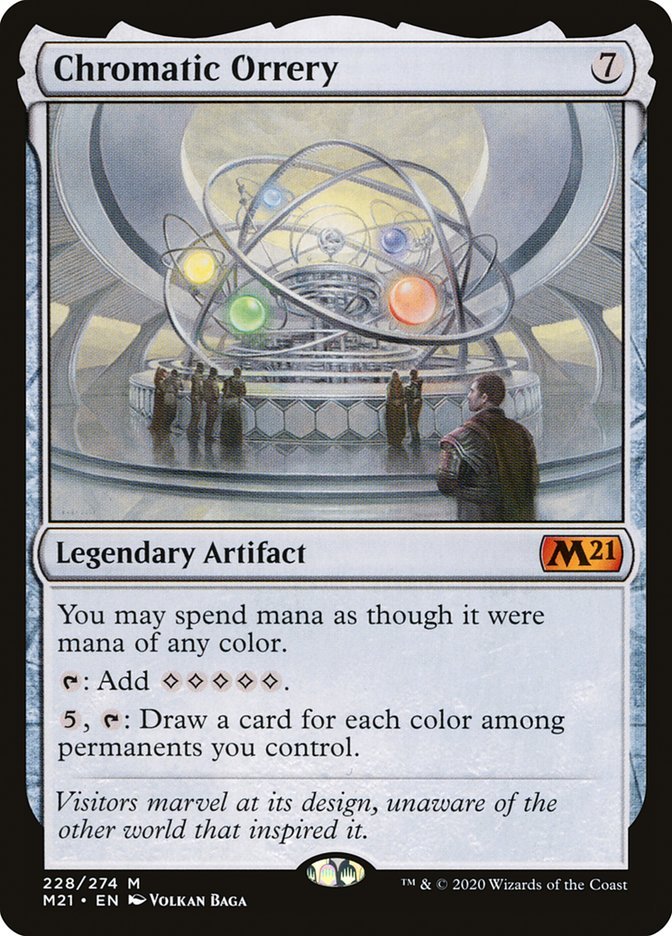
We start with a costly colourless card from M21. However, it’s not Ugin. Instead, it’s the 7-mana mana rock, Chromatic Orrery. This card hasn’t made much of a splash in competitive formats, but it has become a pet card of mine.
In Magic: The Gathering Arena, it lets me build what can only be called nonsense 5-colour Green decks: a bunch of ramp, Karn, the Great Creator and some big X-spells to finish things off. Need to draw more cards off your Orrery? Fetch Sphinx of the Guildpact from your Karnboard. Need to kill your opponent dead? Electrodominance will do the trick. Need to hit more lands and spells? Escape to the Wilds costs 5 mana and that’s exactly the amount Orrery makes. I’m not saying this deck or Chromatic Orrery were good, but I sure did find them fun, and that’s why it’s one of my favourite cards this year.
Unfortunately, a lot the key pieces I was using didn’t survive rotation, but the Orrery itself did. Maybe it’ll make a comeback later on this year, but for now, it’ll live on in my memory.
#9: Miara, Thorn of the Glade
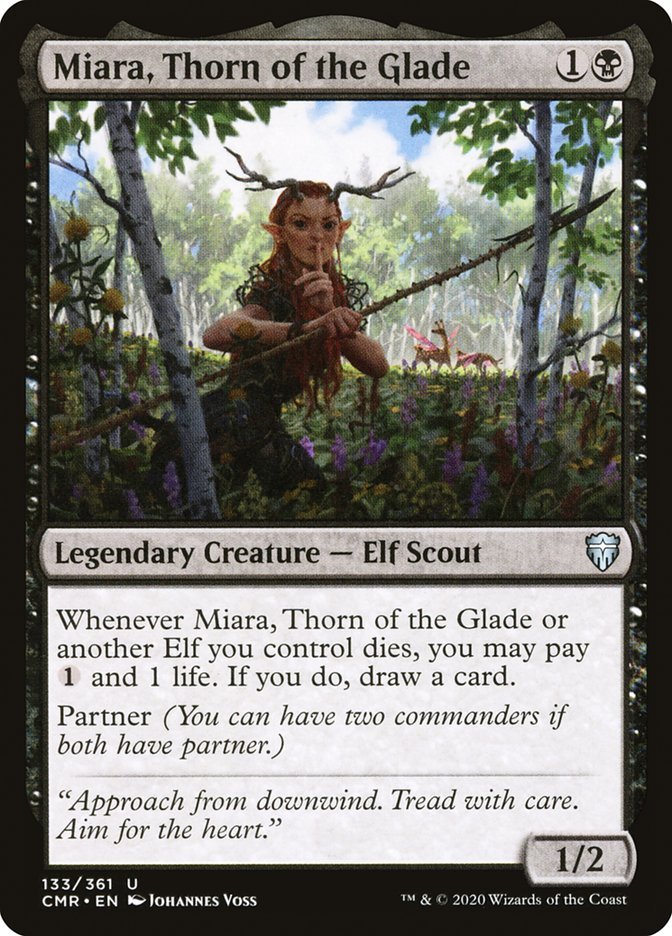
They made my favourite tribe a draft archetype in a Commander product, you say? Count me in. It’s been a long while since I was able to draft Elf tribal in any format (last time Lorwyn flashback drafts were on Magic Online, to be exact). As a result, I was very happy to find out that this year’s multiplayer product was an EDH draft format called Commander Legends. The very first time I got to draft the set, I managed to pull together a very strong version of the BG Elves archetype with Miara and Kamahl, Heart of Krosa as the commanders. Kamahl might as well be an honorary Elf as far as I’m concerned.
My experiences playing the deck were a blast and it was Miara who led the charge. Let’s hope that BG Elves make the upcoming Kaldheim an enjoyable draft format.
#8: Indulging Patrician
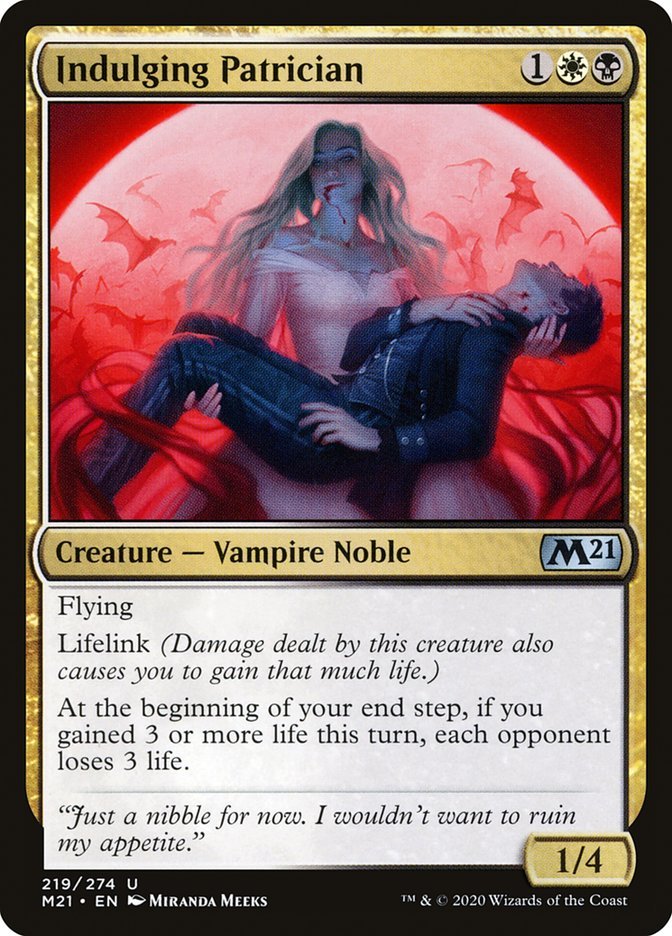
Indulging Patrician wins my award for best art of the year. Does that award count for anything? Not really, but it’s how it made this list. Miranda Meeks really knocked this one out of the park. The visual storytelling in the piece combined with the strong use of colour hit me immediately. It only got better the more details I spotted.
It also helps that the WB archetype that Indulging Patrician is the signpost uncommon for is quite fun. (Even if it isn’t my favourite archetype in the set – more on that later). I drafted the set a lot and had fun with multiple copies of Indulging Patrician closing out games with alarming speed.
[adinserter block=”1″]
#7: Dreamtail Heron
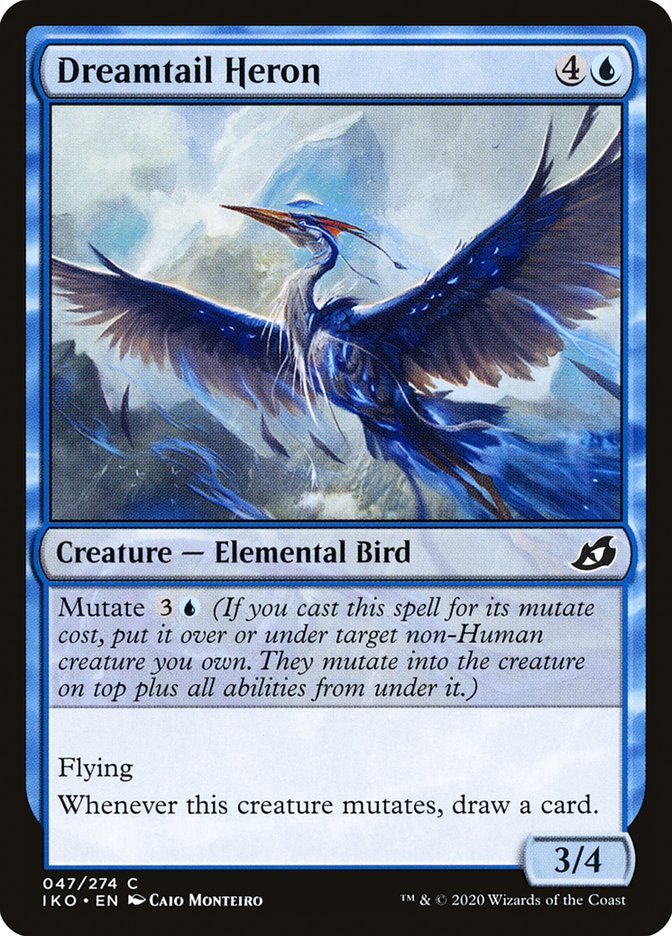
Dreamtail Heron is here as a poster bird for the Mutate mechanic. Despite initial concerns that the mechanic would lead to too much rules complexity, the designers at Wizards of the Coast kept things manageable. In part, that meant ensuring cards with Mutate didn’t come with a pile of additional complications. (I’m looking at you, Characteristic Defining Abilities.) The mechanic played a lot better than expected, especially with this year’s Magic mostly being played on Arena, which handled all the details of the mechanic for players. I found the mechanic itself extremely enjoyable, despite the risk involved with going all-in on one creature.
So, why did I pick Dreamtail Heron? Well, my favourite thing to do in the format was to mutate a Dreamtail Heron onto a Thieving Otter. Not only do you get draw cards from the interaction (the best thing to do in Magic), you also get to give a cute otter some majestic wings. That’s a win-win from me.
#6: Llanowar Visionary
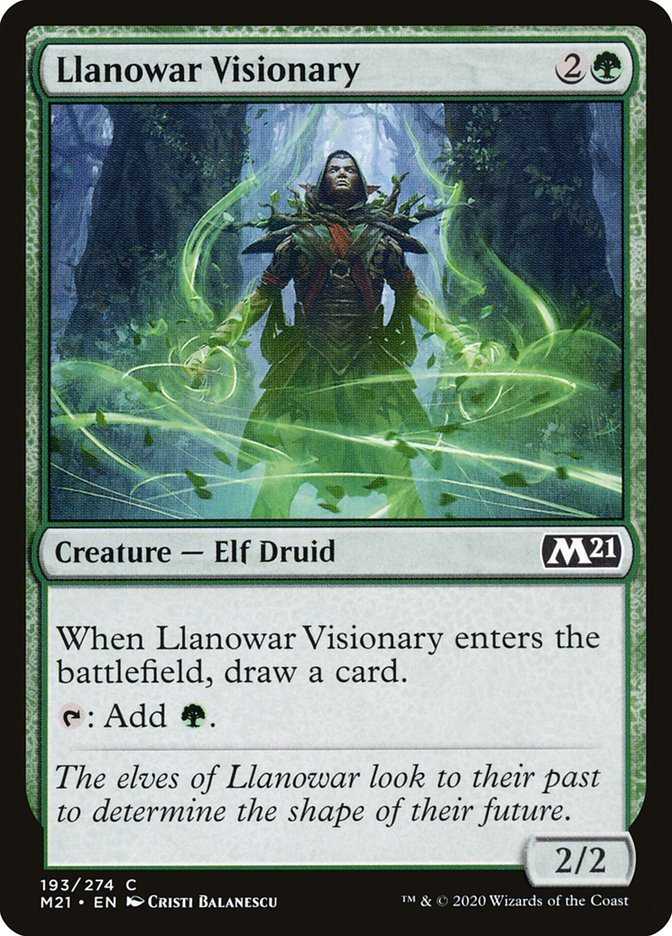
I’ve always said that my favourite card in Elves was Elvish Visionary (to the point where I’m a little sad most Modern lists have cut it). Such an innocuous card at face value, Elvish Visionary has been the glue holding together a lot of the decks I’ve played over the years. This year, Wizards decided to mash together my favourite elf with one of the best mana-elves from the very beginning of Magic: Llanowar Elves. What we got was a card that, while not the best in either slot, fulfils two key roles.
Llanowar Visionary made it into my Historic Elves decks for a short while before Jumpstart made Elvish Archdruid legal in the format. I even tried it in Pioneer, where Archdruid isn’t available, and it managed to advance the board state while digging for key pieces. However, I think Llanowar Visionary‘s time to shine has yet to come. Kaldheim is just round the corner and I’m hoping for my favourite tribe to make a foray into Standard for the first time since Dominaria rotated.
#5: Sprite Dragon
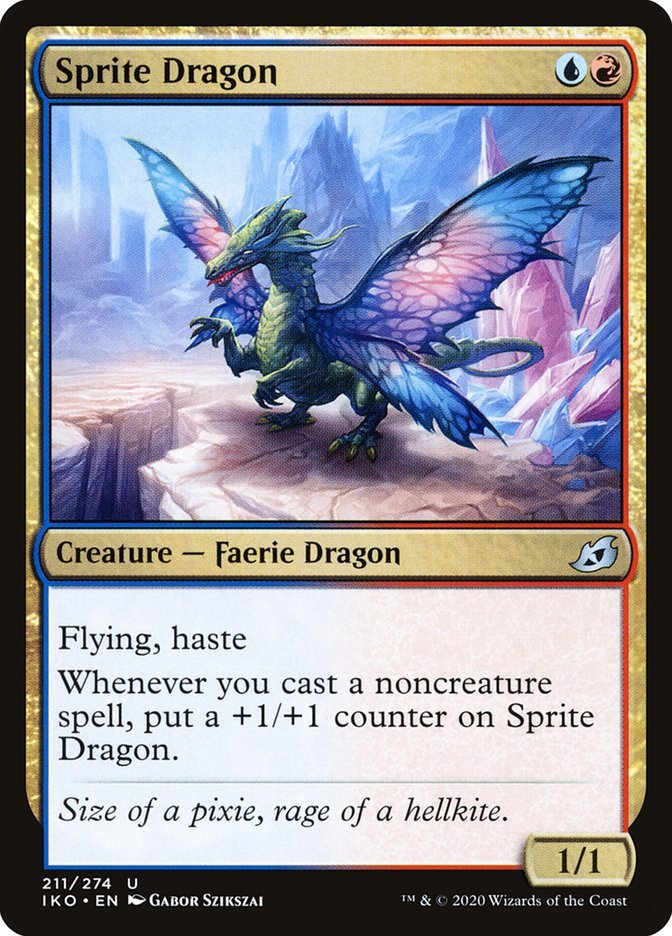
When I’m not playing Elves, I enjoy playing a vary wide range of decks in all sorts of formats. A pet deck style of mine is ‘Miracle Grow’: you play cheap creatures that grow as you play spells and protect them with light disruption while they finish the game for you. Sprite Dragon, along with M21’s reprint of Quirion Dryad, rekindled my interest in the deck and I’ve been jamming it in Historic alongside Deeproot Champion from Ixalan. I’m happy that the faerie dragon has given me another chance to play the deck, and I was pleasantly surprised to see it make it all the way back to Vintage as a threat that benefits from all the restricted cards.
[adinserter block=”1″]
#4: Sublime Epiphany
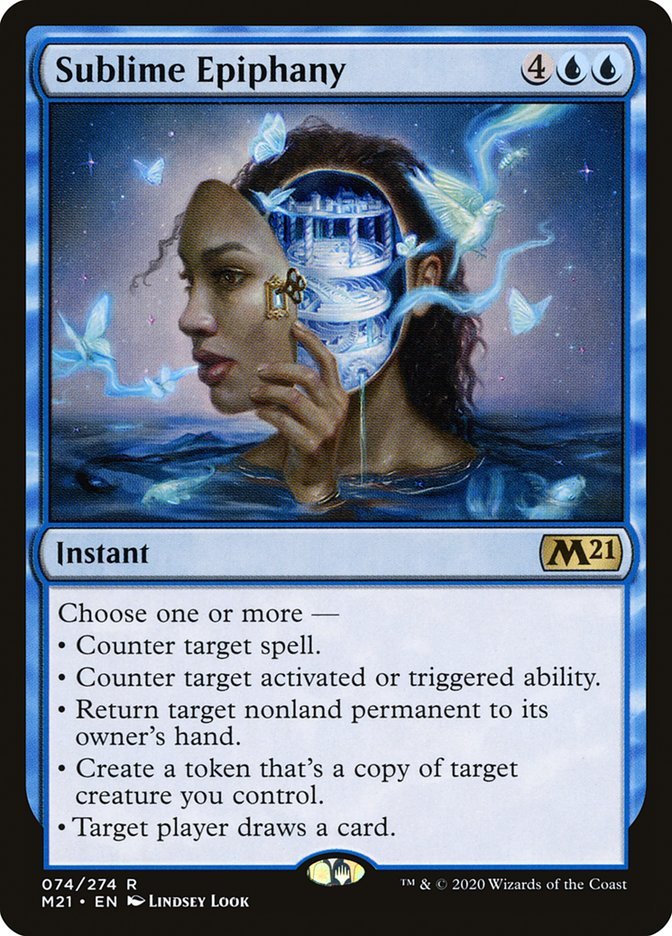
As mentioned previously, I drafted a lot of M21. I found the format extremely fun and my favourite archetype was UR spells. I wanted to include Sublime Epiphany here as a representative of that draft format, but also as my favourite card combo to try for when drafting the set. It might be a little Magical-Christmas-Landy, but I managed it multiple times.
All you need is a Sublime Epiphany and as many copies of Shipwreck Dowser as you can get. Now you can lock your opponent out in a manner similar to the Modern Eternal Command decks of old.
Counter your opponent’s spell, copy your Dowser and get back your Sublime Epiphany. Also, draw a card and maybe bounce a thing. The world is now yours. Opponent tries to get round this by not doing anything on their turn? Just bounce their best thing, copy your Dowser, draw a card and get back your Epiphany. Congratulations, you’ve most likely won the game.
Best New Old Card: Bramblewood Paragon
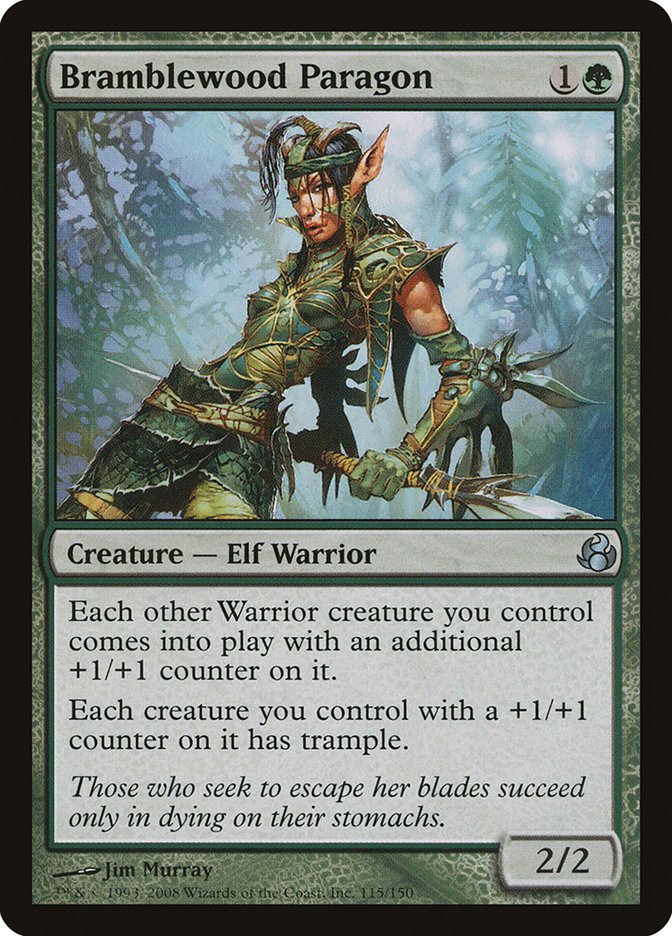
Before we move on to the top 3, I wanted to give out a Best New Old Card award. The ‘Best New Old Card’ award is given to a card that’s been out for a while already, but found new use in my decks due to other new cards’ being printed or changes in formats and metagames.
Bramblewood Paragon is an elf that gives a payoff for playing Warriors in your deck. I’ve always kept it in the back of my mind, but it’s never seemed good enough to include in my elf decks because the warrior count has never been high enough.
However, this changed in 2020 when a new version of Modern Elves was brought to my attention by a viewer. This new variant has a warrior and +1/+1 counters subtheme going on. Bramblewood Paragon pairs perfectly with Growth-Chamber Guardian, turning them into 3/3 Squadron Hawks with trample rather than flying. Joraga Warcaller spreads the benefit to your whole team. A card that will show up later on in this list gives +1/+1 counters to the creature it finds.
This new version of Elves is great fun and brings a new angle from which to attack the Modern metagame, with a more aggressive bent. Being able to pick from multiple variants of the deck is always an advantage.
#3: Turntimber Symbiosis//Turntimber, Serpentine Wood
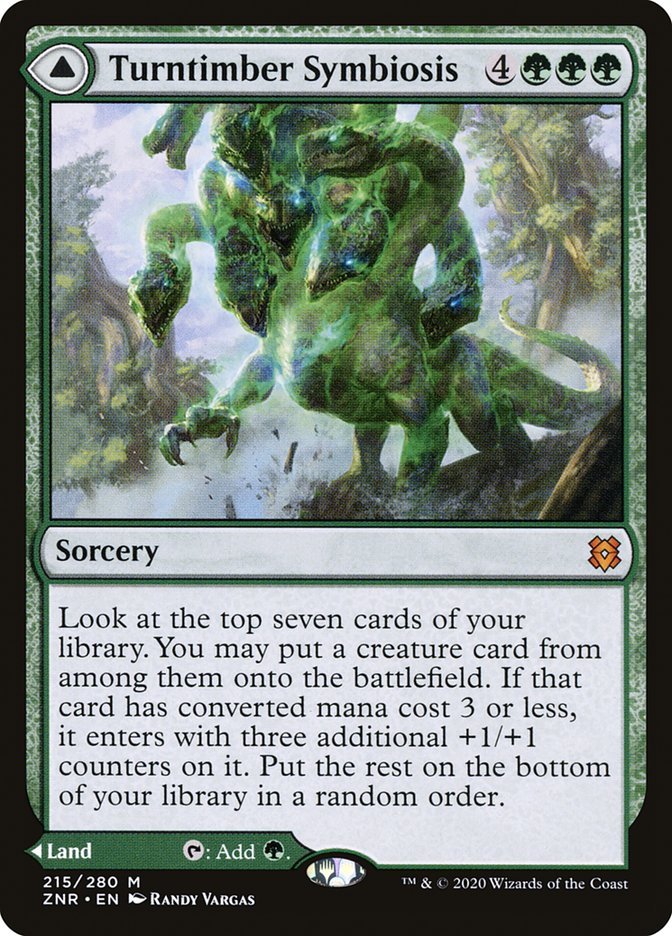
When the Modal Double-Faced Cards were announced, there was a lot of scepticism surrounding them. It has been dangerous in the past to allow decks to run low lands counts and still be able to cast spells. Goblin Charbelcher and Oops All Spells can utilise these new cards to cast their combo pieces that rely on the decks’ not having any actual land cards in them. As a result, these styles of deck have had a resurgence in Modern.
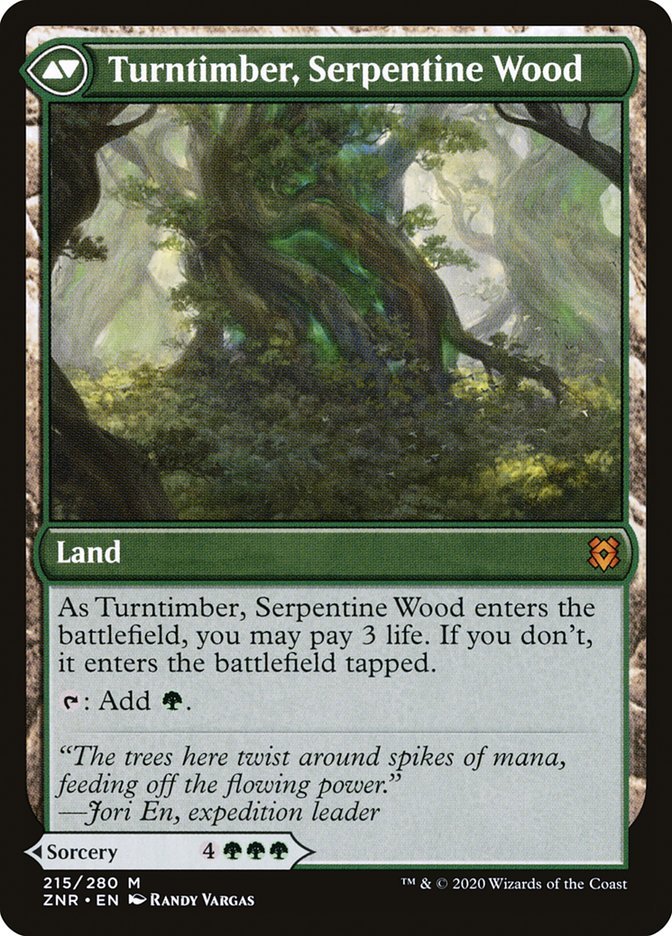
However, I’m here to talk about the more fair uses of the MDFCs. In a deck that only wants lands that make Green mana (Elves), the opportunity cost of including Turntimber, Serpentine Wood is extremely low. The upside in the lategame is huge. Instead of drawing another land, we effectively draw the best creature in the top seven cards of our library. We can hit a Craterhoof, we can hit a Lord and even if we hit a less-than-stellar creature, it gets to come in with three +1/+1 counters, making it a threat by itself. The best ‘miss’ I’ve had is Steel Leaf Champion, for a 8/7 elf that’s hard to block. The counters even synergise with Bramblewood Paragon and Growth-Chamber Guardian in the Bramble Elves deck to give trample or go fetch another Guardian.
Turntimber Symbiosis is the best sort of card a tribal player such as myself could hope for from a set which doesn’t include your prefered tribe as a theme. It joins other favourite cards like Collected Company and Chord of Calling as great options for Green-based creature decks.
[adinserter block=”1″]
#2: Conspicuous Snoop
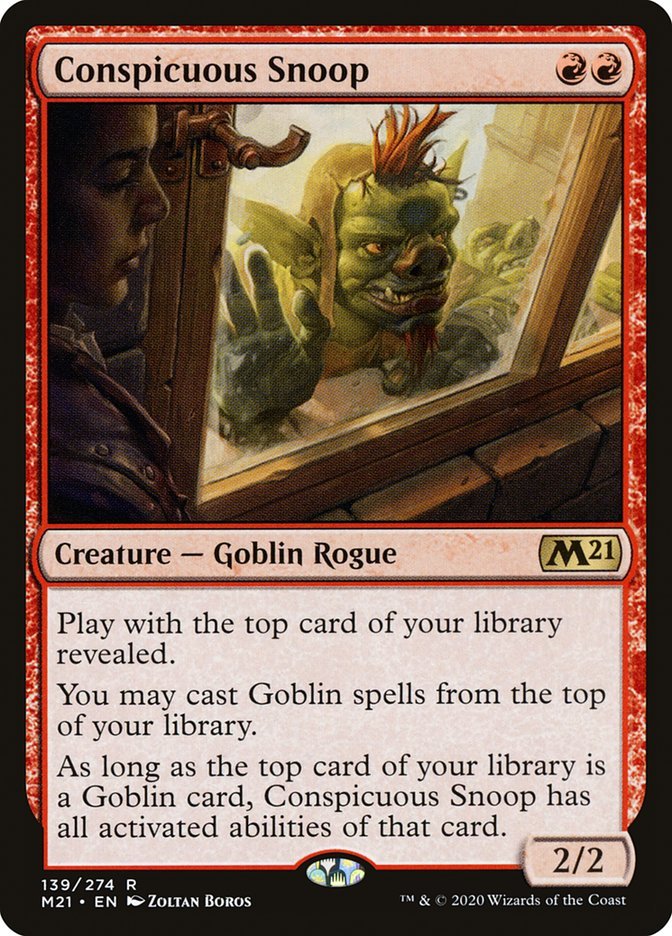
Despite my love for Elves, I’m not a purely one-tribe kind of person. I really enjoy tribal synergies wherever I find them. From Merfolk to Elves, from Cats to Scarecrows, if I can find some lords and/or some payoffs, I’ll give it a go.
Core 21, in addition to making a bunch of early entries on this list, gave my second favourite tribe a new toy to work with. Conspicuous Snoop made me hopeful for Goblins in Historic and gave us some great new combos to work with in Modern. While Jumpstart pushed Historic Goblins too far with the addition of Muxus, Goblin Grandee, Modern Goblins have been a blast. Snoop allows us to combo off almost as if we were playing Splinter Twin – getting to play our normal strategy (a tribal deck, rather than a tempo deck in Twin’s case) with a combo that can immediately end the game always looming for the opponent to worry about.
To top it off, Conspicuous Snoop also has great art. A characteristically comedic goblin, Snoops can’t help but fail at sneaking around, but we love him anyway.
#1: Allosaurus Shepherd
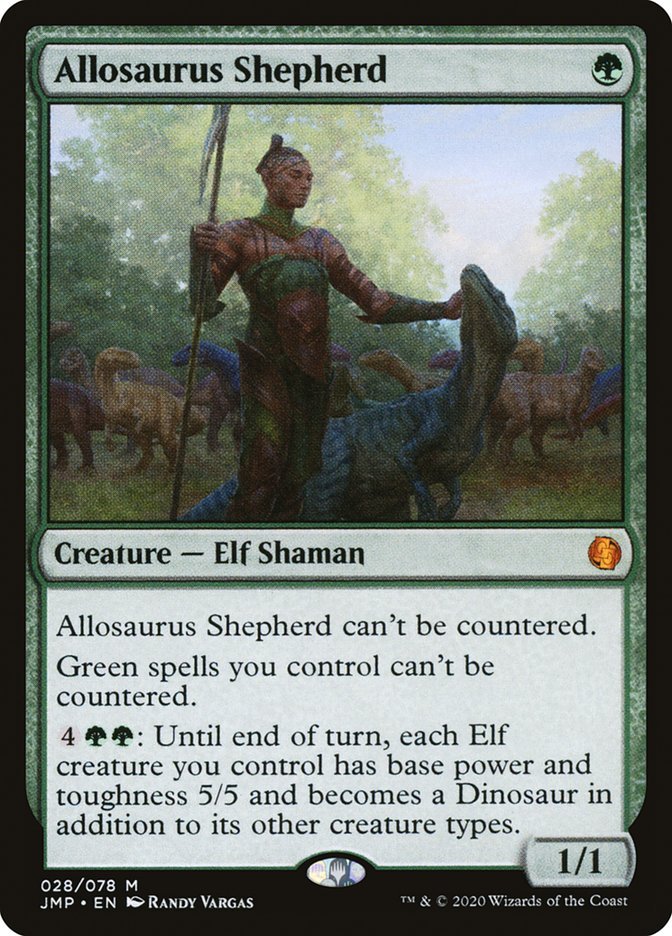
There is no other card that I could give my #1 card of 2020 to than Allosaurus Shepherd. The best elf printed this year – in the Jumpstart Elf pack no less – brings so much to the table that I’m sad I don’t get to play it in the formats between Legacy and Historic.
Allosaurus Shepherd provides insurance against counterspells for all of our spells (even cards like Collected Company or Green Sun’s Zenith) while also giving us an alternate win-con by mounting all our elves onto dinosaurs and mauling our opponent. This activation also provides safety against damage- or toughness-based sweepers and a way of attacking for chip damage by threatening to use it.
All in all, it’s probably no surprise that Allosaurus Shepherd is my favourite card of the year, seeing as I’ve even tried jamming it in Vintage (to little success so far, but I have high hopes). Let’s hope that 2021 provides us with as good an elf as 2020 did. Here’s looking forward to Kaldheim.
[adinserter block=”1″]
Jamie is a MtG and assorted gaming enthusiast who wants to bring his enjoyment and passion for games to everyone.
